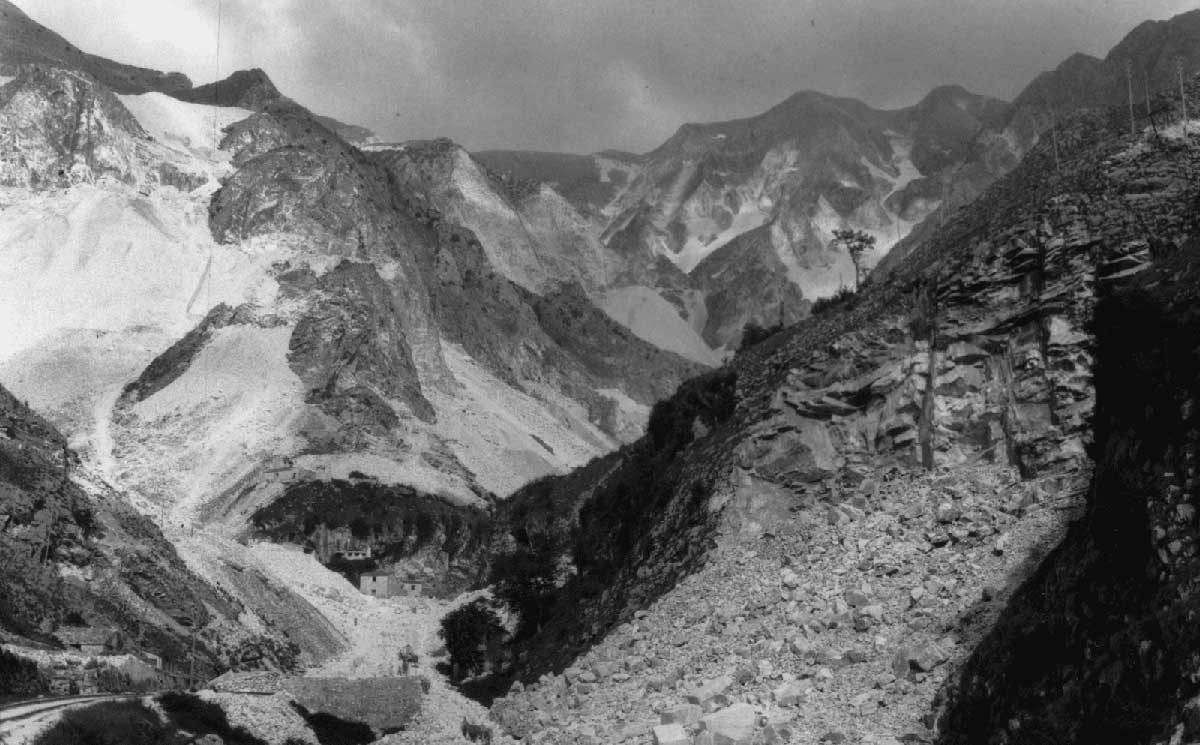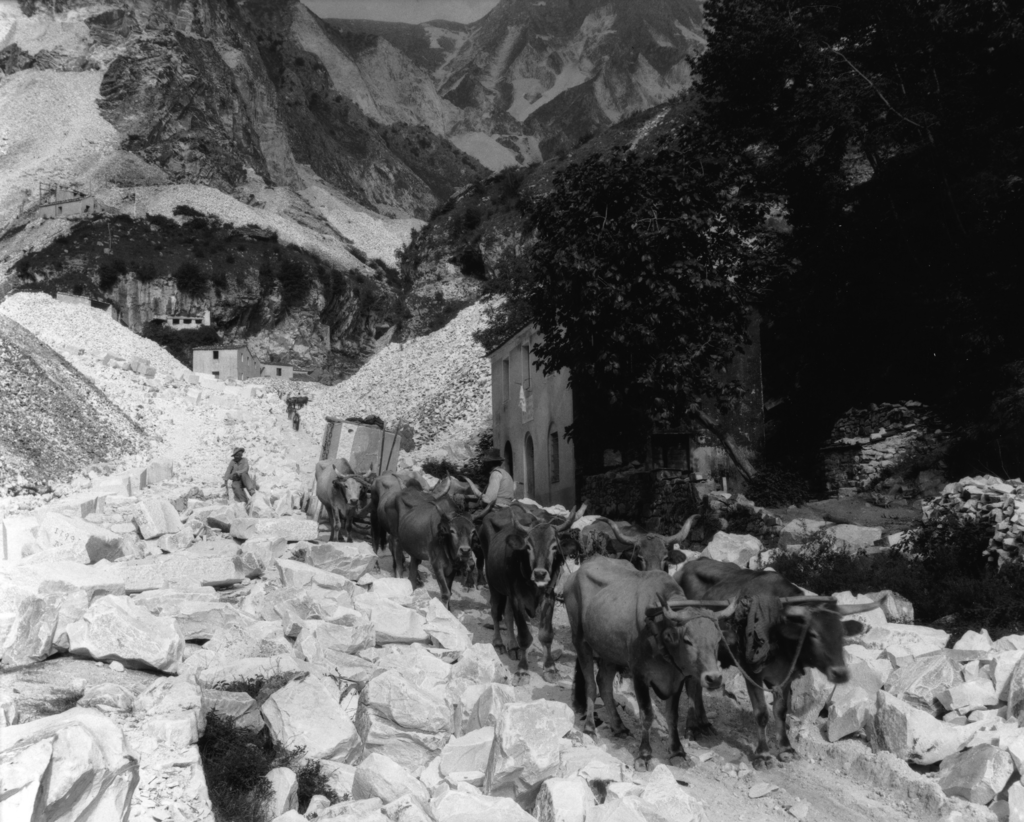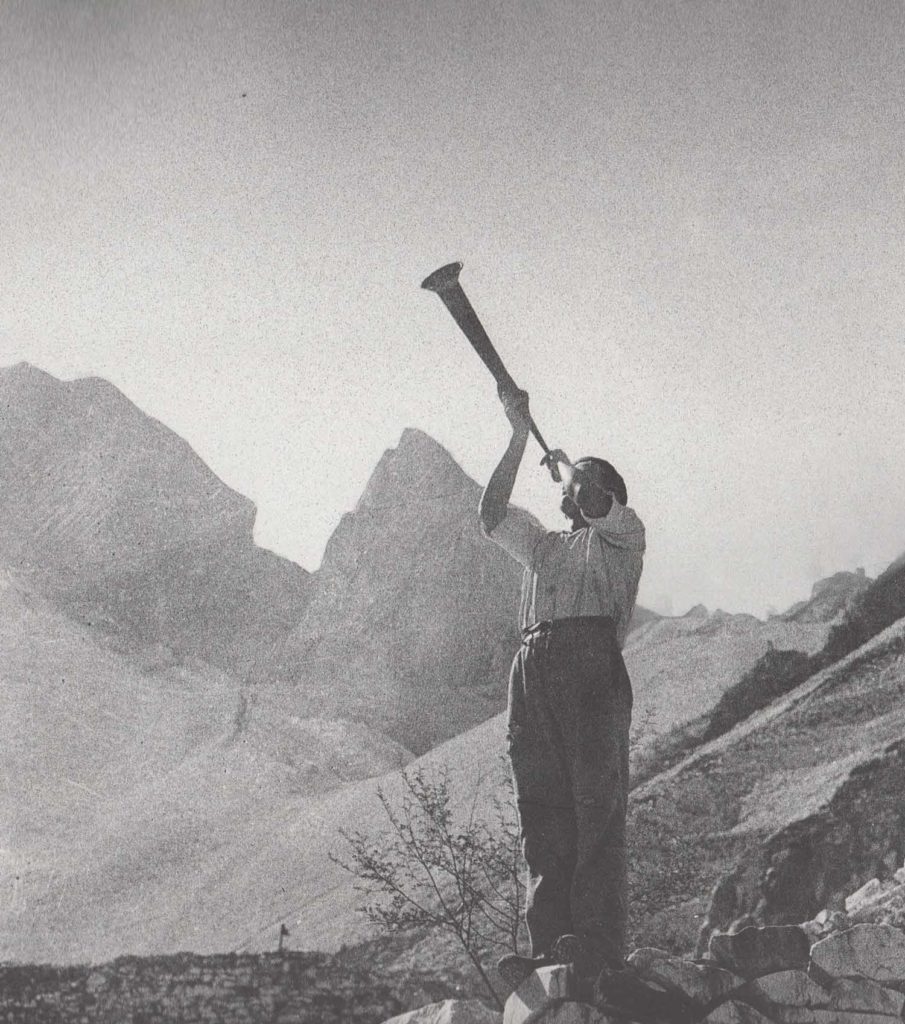
A Beautiful History of Marble
June 04, 2024
The sculpture of Richard Erdman is entwined with the history of marble and the source of the most renowned marble in the world: Carrara, Italy. Having maintained a studio in Carrara for decades, Richard’s work is imbued with the region’s rich legacy of stone, from Michaelangelo to the newest generations of marmisti in training. Richard deeply values his place in Carrara’s long lineage of artists and stoneworkers, and takes pride in his studio’s role in ensuring the health of Carrara’s marble-working artisanry for generations to come.

Marble wagons pulled by Oxen, 1913
Poised at the foothills of Tuscany’s Apuan Alps, Carrara and the surrounding region is recognized as the birthplace of some of history’s most celebrated sculptures. Decades after Richard’s first pilgrimage to the heartland of marble, both he and his work have become part of a rich and storied lineage shaped and shared by generations of artists — Michelangelo and revered modern figures Henry Moore, Barbara Hepworth, and Isamu Noguchi among them. By choosing to work in Carrara with marble as their medium, each of these artists chose not only to connect with stone, but to enter into collaboration with place, tradition, and the skilled marmisti who have kept that tradition alive for centuries.

In the 1800s, when mine blasting, known as varate, was used to extract large pieces of marble from the mountain, a tuba was played, emitting very low notes, to warn of danger.
Read on to learn more about Richard’s practice and the history of marble, from ancient times to the present day.



